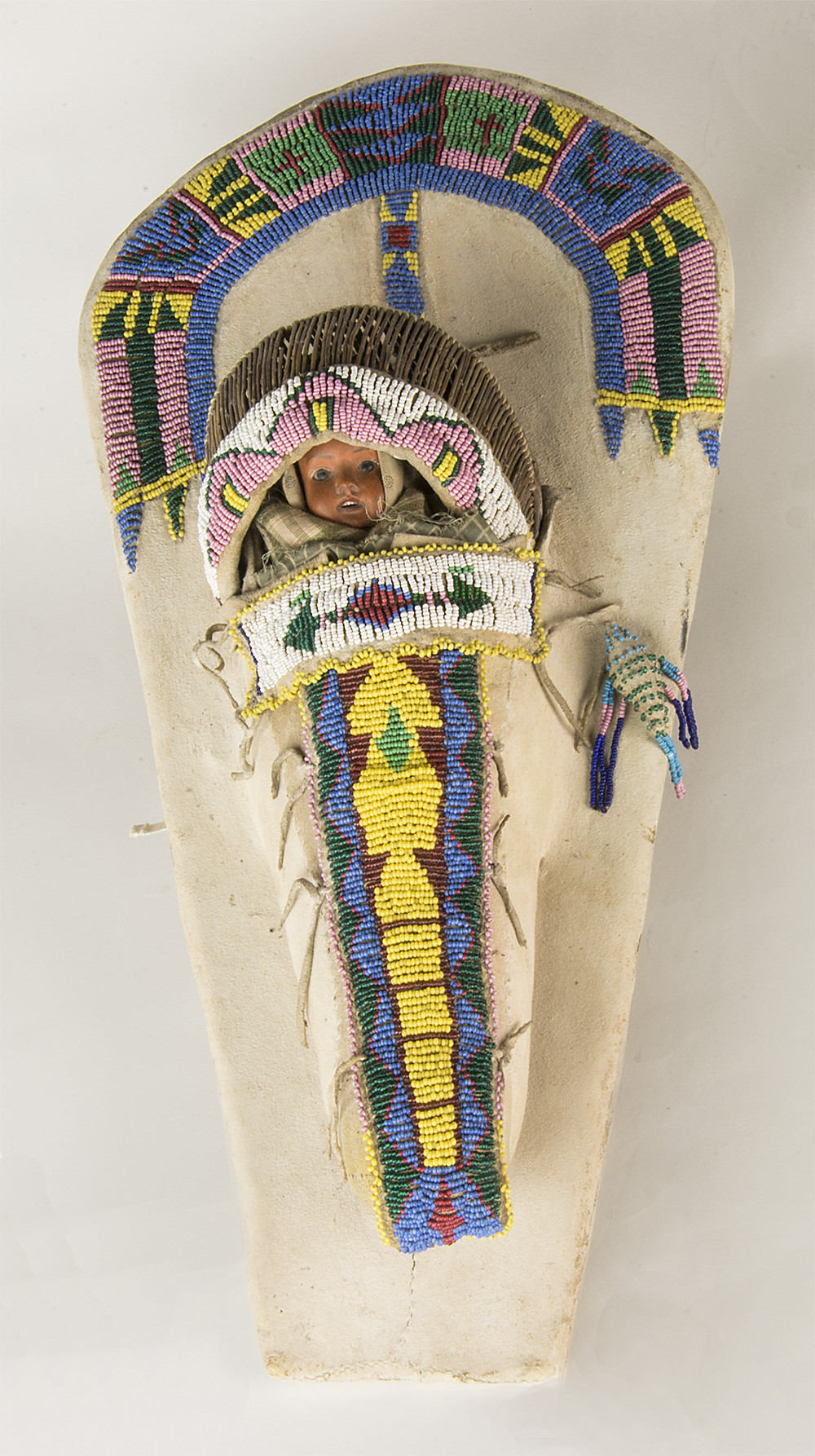Story
Toy Cradleboards
This beautiful miniature Ute cradleboard (E.1894.178) was undoubtedly made for use as a toy, but most likely it had a second purpose -- so that a young girl could learn about child care. It is one of many in the History Colorado collection. This one was made by Chipeta around 1915. She gave it to a friend, who ultimately donated it to History Colorado. Chipeta was the wife of Chief Ouray, one important Ute leader in the 1800s, and a leader herself.
Historically, Ute women strapped cradleboards on their backs and transported their babies, thus having their hands free to harvest food or collect plant material for basket making. Cradleboards could be leaned against trees, serving as sort of a play pen, while mothers worked nearby. If suspended by the straps from low branches, cradleboards could have been gently swung to soothe babies. And cradleboards could have functioned as high chairs or beds for babies to safely sleep in.
Traditionally, Ute grandmothers made unique cradleboards for their grandchildren. They cut oval boards usually of pine and covered them with buckskin. The fronts of cradleboards had bonnets made of thin, willow twigs to protect babies’ heads. Sometimes, a cloth was attached above bonnets so that it could be pulled down over babies’ faces to protect them from the sun or while they were sleeping. Babies were placed in “sacks” attached to the bodies of cradleboards. Straps were attached to the backs of cradleboards so that cradleboards could be suspended from the mother’s shoulders. The backs of the cradleboards were decorated with fringe. Cradleboards for boys were laced all the way up, whereas those for girls were not. Also, white clay was rubbed into the hide if cradleboards were for boys, while yellow clay was used for girls’ cradleboards.
Cradleboards were often elaborately decorated with beadwork. Typical Ute design elements are geometric shapes, include triangles, diamonds, squares, rectangles or crosses. Sometimes, small beaded bags often fashioned in animal shapes were attached to the sides of cradleboards, holding babies’ umbilical cords, as protection. In addition other small items were attached for babies to play with.
Toy cradleboards were made very much like real cradleboards that Ute women have used for centuries. You can see how many characteristics of real cradleboards this toy one has.

